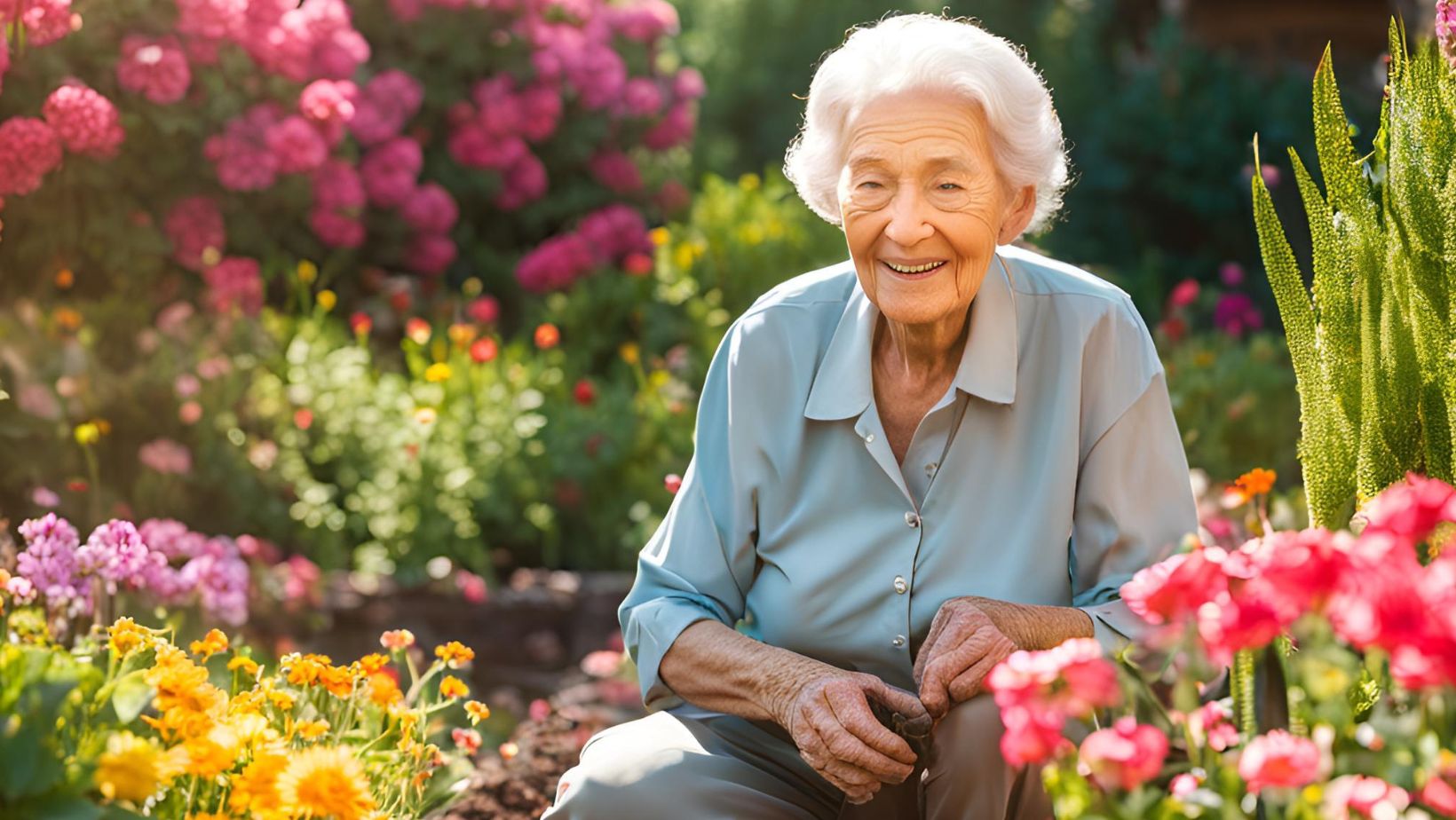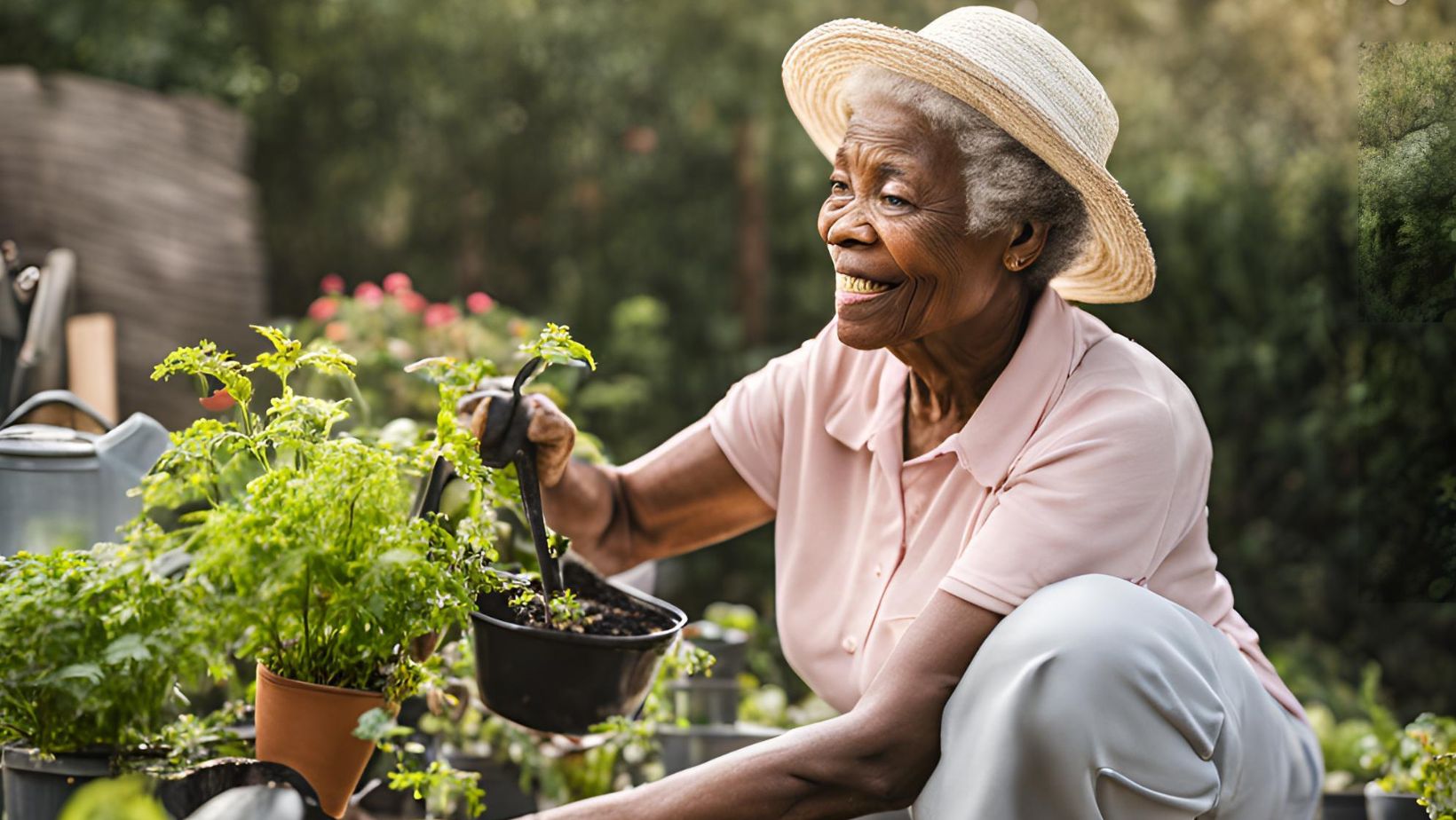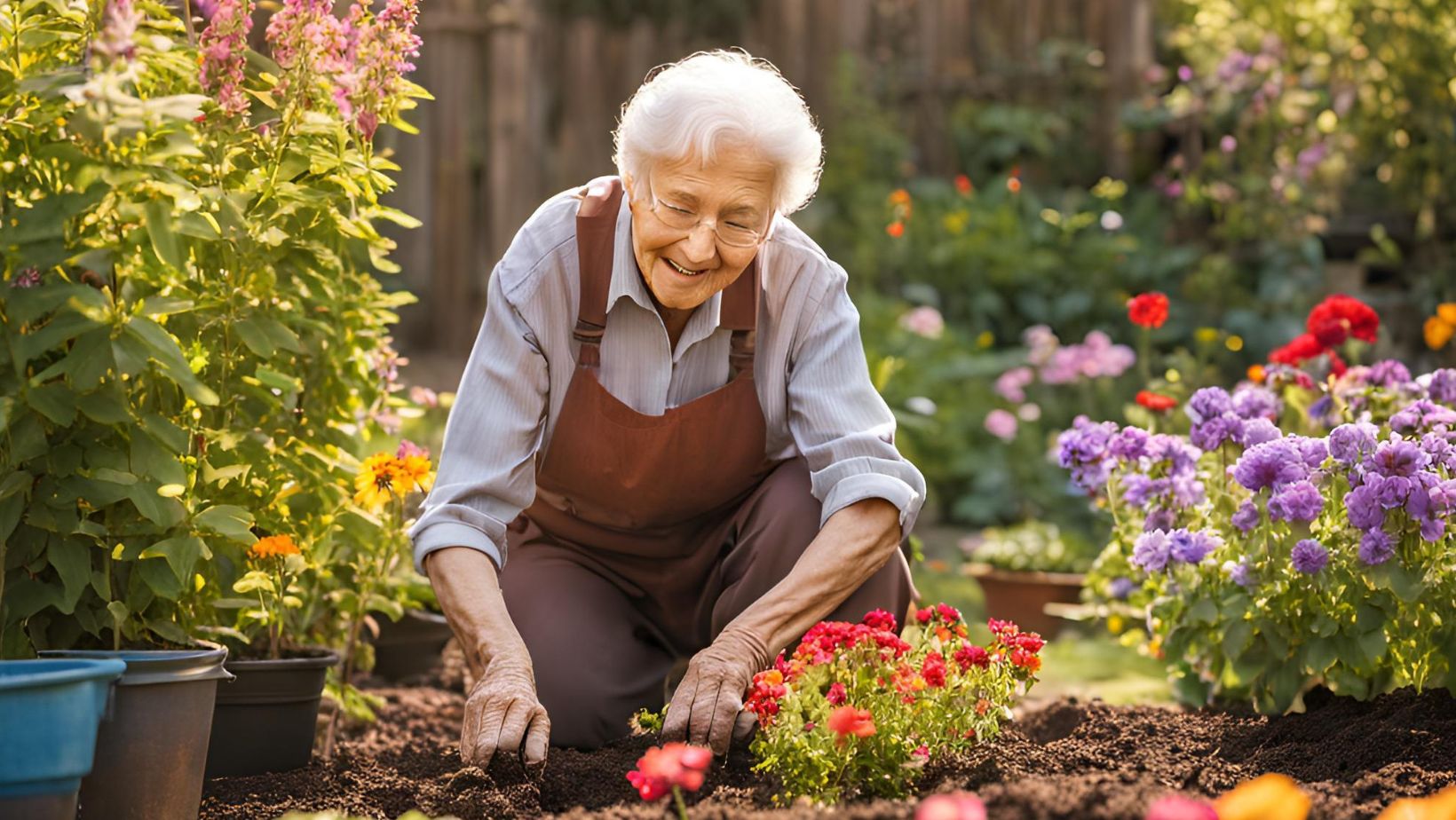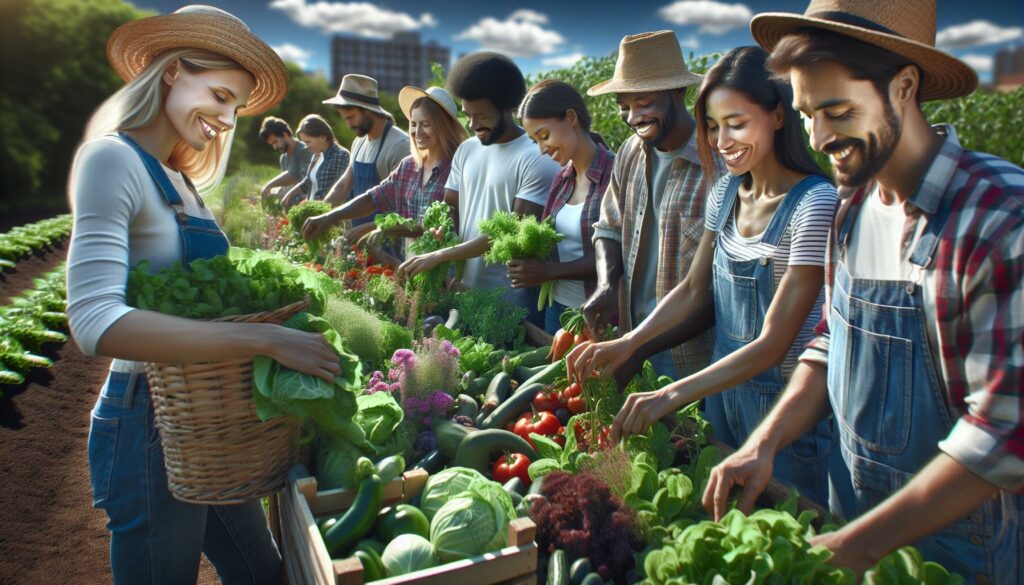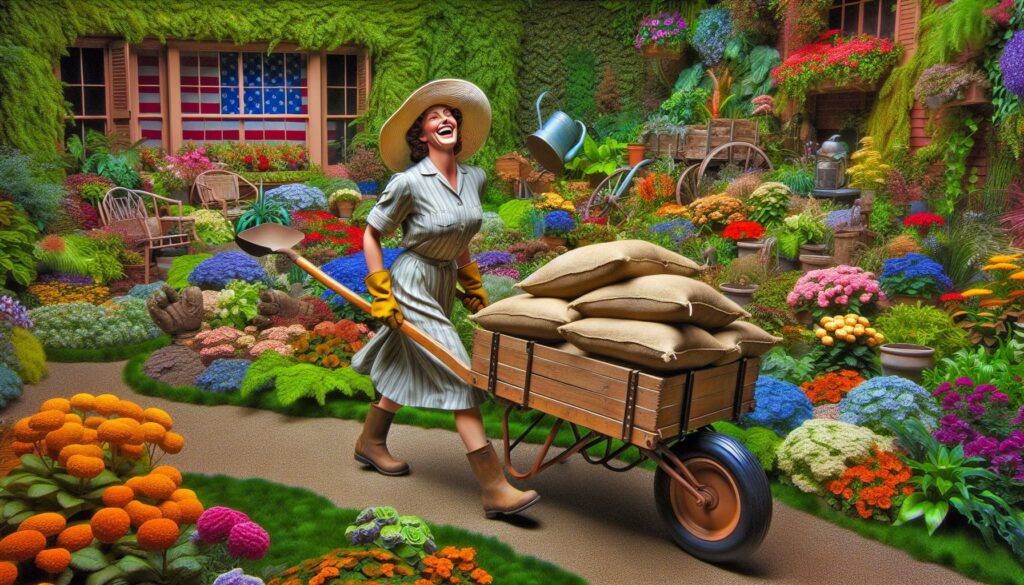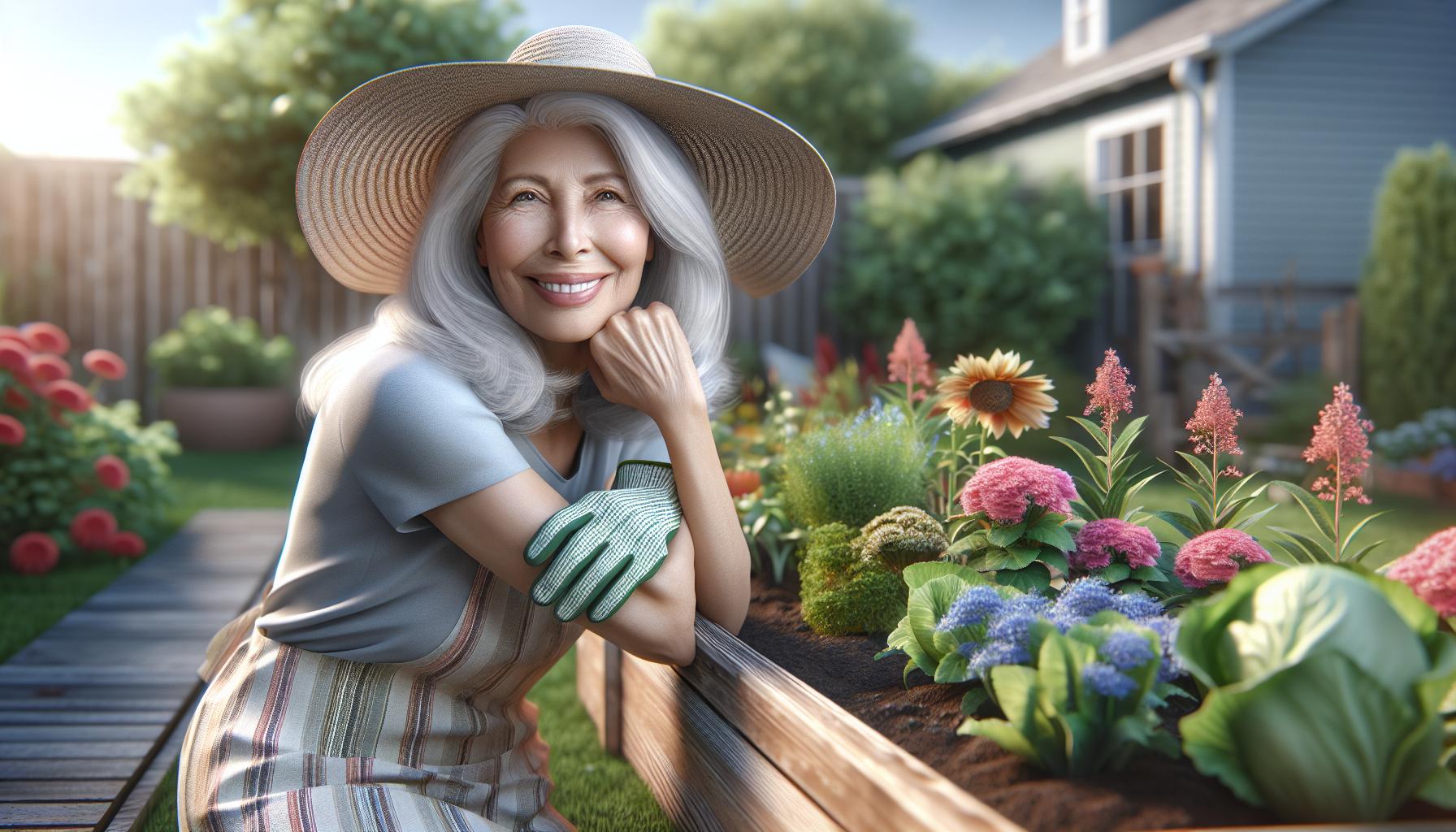
As an avid gardener with decades of experience I’ve discovered that gardening becomes even more rewarding in our golden years. There’s something truly special about nurturing plants and watching them grow especially when we adapt our gardening practices to suit our changing physical needs.
I’ll share how seniors can continue enjoying this fulfilling hobby while staying safe and comfortable. Whether you’re dealing with limited mobility arthritis or simply want to make gardening easier you’ll find practical solutions to keep your green thumb active. From raised beds and vertical gardens to ergonomic tools these adaptations have helped countless older adults maintain their connection with nature without overexertion.
Key Takeaways
- Gardening for seniors provides significant physical benefits, including improved cardiovascular health, bone density, and flexibility, while burning 150-300 calories per 30-minute session
- Ergonomic tools and raised garden beds (24-36 inches high) are essential adaptations that make gardening more accessible and reduce physical strain for older adults
- Safe gardening practices include taking regular breaks every 30 minutes, gardening during morning hours (6-10 AM), and maintaining proper body mechanics to prevent injuries
- Low-maintenance plants like succulents, perennial flowers, and easy-growing vegetables (bush beans, cherry tomatoes) are ideal choices for senior gardeners
- Vertical gardening solutions and container gardening systems provide accessible alternatives that minimize bending and kneeling while maximizing growing space
- Community garden programs offer valuable social connections through shared plots, workshops, and regular gatherings, enhancing both physical and mental well-being
Gardening for Seniors
Gardening for seniors offers significant advantages seeking to maintain active lifestyles. Through my years of experience working with older gardeners, I’ve documented numerous positive outcomes that extend beyond the garden.
Physical Health Advantages
Regular gardening activities boost cardiovascular health through consistent moderate exercise. My research shows that 30 minutes of gardening burns 150-300 calories while strengthening muscles in the hands, arms, shoulders, back, and legs. Here are key physical benefits:
- Build bone density through weight-bearing activities like digging, planting, and carrying tools
- Improve flexibility from reaching, bending, and stretching movements
- Enhance hand strength through gripping tools, pulling weeds, and pruning plants
- Increase vitamin D levels through supervised sun exposure while working outdoors
- Develop better balance from various standing and moving positions
- Reduce stress levels through mindful focus on plant care activities
- Maintain social connections by joining community gardens or sharing harvests
- Boost self-esteem by creating beautiful spaces and growing food
- Sharpen decision-making skills through plant selection and garden planning
- Practice mindfulness while engaging with nature’s sights, sounds, and textures
| Activity | Calories Burned (30 min) | Muscles Engaged |
|---|---|---|
| Weeding | 150 | Arms, core, back |
| Digging | 300 | Full body |
| Pruning | 200 | Arms, shoulders |
| Planting | 175 | Legs, core, arms |
Making Gardening More Accessible for Seniors![]()
I’ve identified several adaptations that transform traditional gardening spaces into senior-friendly environments. These modifications focus on reducing physical strain while maintaining the joy of gardening.
Ergonomic Tools and Equipment
Ergonomic gardening tools feature extended handles, cushioned grips, and angled designs that minimize joint stress. I recommend lightweight aluminum tools with non-slip handles for enhanced control during tasks like pruning, weeding, or planting. Essential ergonomic tools include:
- Telescoping handles that extend reach by 12-36 inches
- D-grip attachments for improved leverage
- Palm-fitted trowels with 45-degree angles
- Foam-padded kneelers that convert to seats
- Rolling garden scooters with 360-degree rotation
- Trigger-activated watering wands reaching 30-48 inches
Raised Garden Beds and Containers
Elevated growing spaces eliminate the need for excessive bending or kneeling. I’ve found these optimal measurements for accessible gardening:
| Feature | Recommended Dimensions |
|---|---|
| Bed Height | 24-36 inches |
| Bed Width | 24-48 inches |
| Path Width | 36-48 inches |
| Container Depth | 12-24 inches |
- Wheeled planters with locking casters
- Table-height grow boxes with built-in water reservoirs
- Vertical wall planters with drip irrigation
- Hanging baskets with pulley systems
- Self-watering containers with water level indicators
- Stackable pots with integrated drainage systems
Safe Gardening Practices for Older Adults
Safe gardening practices protect older adults from common injuries while maximizing the enjoyment of their garden activities. These essential safety measures ensure continuous gardening engagement without compromising physical well-being.
Preventing Injuries and Strain
Garden safety starts with proper body mechanics to prevent muscle strain or injury. I recommend these specific practices:
- Take 10-minute breaks every 30 minutes of gardening activity
- Alternate between tasks requiring different movements (digging kneeling squatting)
- Keep tools within arm’s reach to avoid excessive stretching
- Use a garden cart to transport heavy items like soil bags mulch
- Start with 15-20 minutes of light stretching focused on shoulders back legs
- Maintain proper posture by keeping the back straight while performing tasks
- Position garden beds waist-high to eliminate excessive bending
- Garden during morning hours (6-10 AM) to avoid peak sun exposure
- Apply SPF 50+ sunscreen 30 minutes before outdoor activity
- Wear wide-brimmed hats light-colored loose-fitting clothing
- Install shade structures over frequently used garden areas
- Keep water bottles within arm’s reach drink 8 oz every 30 minutes
- Monitor local weather forecasts plan activities accordingly
- Use covered garden spaces greenhouses during extreme weather
- Install slip-resistant pathways for wet weather navigation
| Weather Condition | Safe Temperature Range | Maximum Exposure Time |
|---|---|---|
| Sunny Days | 60-75°F (15-24°C) | 2-3 hours |
| Cloudy Days | 55-80°F (13-27°C) | 3-4 hours |
| Light Rain | 60-70°F (15-21°C) | 1-2 hours |
Best Plants for Senior Gardeners
Based on my extensive gardening experience, I’ve identified plants that deliver maximum enjoyment with minimal physical strain for senior gardeners. These selections prioritize ease of maintenance, accessibility, and rewarding results.
Low-Maintenance Options
I recommend these resilient plants that thrive with basic care:
- Succulents: Drought-tolerant varieties like Echeveria, Sedum, and Aloe require minimal watering and pruning
- Perennial Flowers: Hardy varieties including Black-Eyed Susans, Coneflowers, and Daylilies return yearly with limited intervention
- Herbs: Mediterranean herbs like Lavender, Rosemary, and Sage adapt well to container growing and resist common pests
- Ornamental Grasses: Varieties such as Feather Reed Grass and Blue Fescue provide year-round interest with seasonal trimming
- Native Plants: Local species like Purple Coneflower and Butterfly Weed naturally resist regional pests and diseases
Easy-to-Grow Vegetables
These vegetables offer reliable harvests with straightforward care requirements:
- Bush Beans: Compact plants produce abundant crops without requiring support structures
- Cherry Tomatoes: Determinate varieties like ‘Patio’ and ‘Tiny Tim’ grow well in containers
- Leaf Lettuce: Cut-and-come-again varieties provide multiple harvests from a single planting
- Swiss Chard: Heat-tolerant greens produce continuously throughout the growing season
- Radishes: Fast-growing crops mature in 21-30 days with minimal maintenance
| Plant Type | Sun Needs | Water Frequency | Container Size |
|---|---|---|---|
| Succulents | Full/Part | 7-14 days | 4-6 inches |
| Herbs | Full | 3-4 days | 8-12 inches |
| Leaf Lettuce | Part | 2-3 days | 6-8 inches |
| Bush Beans | Full | 3-4 days | 12 inches |
| Cherry Tomatoes | Full | 2-3 days | 5 gallons |
Adaptive Gardening Methods
Adaptive gardening for seniors methods transform traditional gardening spaces into accessible environments for seniors. I’ve developed specific techniques that minimize physical strain while maximizing gardening enjoyment.
Vertical Gardening Solutions
Vertical gardening systems create accessible growing spaces at eye level, eliminating the need to bend or kneel. I recommend installing:
- Wall-mounted planters with integrated irrigation systems
- Tiered garden towers that rotate 360 degrees for easy access
- Pocket gardens attached to fences at 4-5 feet height
- Trellis systems with built-in plant supports
- Living walls with modular planting units
| Vertical System Type | Height Range | Weight Capacity | Setup Time |
|---|---|---|---|
| Wall Planters | 4-6 feet | 20-30 lbs | 30 minutes |
| Garden Towers | 5-7 feet | 50-100 lbs | 45 minutes |
| Pocket Gardens | 3-5 feet | 10-15 lbs | 15 minutes |
- Rolling plant caddies for pots larger than 12 inches
- Elevated planters positioned at 30-36 inches height
- Lightweight fabric pots with handles for easy movement
- Self-watering containers with water level indicators
- Stackable containers with built-in drainage systems
| Container Type | Soil Capacity | Plant Types | Mobility Rating |
|---|---|---|---|
| Rolling Planters | 15-20 gallons | Large vegetables | High |
| Elevated Beds | 8-12 gallons | Mixed herbs | Medium |
| Fabric Pots | 5-7 gallons | Flowers | Very High |
Social Aspects of Senior Gardening
Gardening connects seniors through shared experiences in community spaces and organized groups. These social connections enhance the physical and mental benefits of gardening activities while creating lasting friendships.
Community Garden Programs
Community gardens foster social interaction among senior gardeners through shared plots and collaborative projects. Local organizations like senior centers partner with gardening associations to provide dedicated spaces for older adults, complete with accessible pathways and raised beds. Here are key features of senior-focused community garden programs:
- Designated garden plots measuring 4×8 feet for individual or shared use
- Monthly social events including harvest celebrations plant exchanges
- Mentorship opportunities pairing experienced gardeners with newcomers
- Accessible tool sheds stocked with ergonomic equipment
- Regular workshops on seasonal planting techniques composting methods
- Weekly hands-on classes covering topics like container gardening seed starting
- Field trips to botanical gardens nurseries demonstration gardens
- Seasonal plant swaps where members exchange cuttings seeds plants
- Monthly guest speakers discussing specialized gardening techniques
- Social meetups combining gardening activities with refreshments conversation
| Program Type | Average Group Size | Meeting Frequency | Cost Range |
|---|---|---|---|
| Classes | 8-12 people | Weekly | $15-30/session |
| Social Groups | 15-25 people | Monthly | $0-25/year |
| Garden Clubs | 20-40 people | Monthly | $35-75/year |
| Workshops | 10-15 people | Bi-monthly | $25-45/session |
A Fulfilling and Accessible Hobby
I’m convinced that gardening for seniors remains a fulfilling and accessible hobby when approached with the right adaptations and mindset. With ergonomic tools vertical gardens and raised beds seniors can continue nurturing their green thumbs while staying safe and comfortable.
The physical and mental rewards of gardening make it an ideal activity for maintaining an active lifestyle in our golden years. I’ve seen firsthand how the right modifications and tools can transform any outdoor space into an age-friendly garden that brings joy connection and accomplishment.
By embracing these smart gardening solutions seniors can keep growing thriving gardens that nourish both body and soul for years to come.

